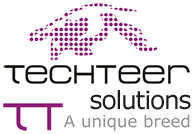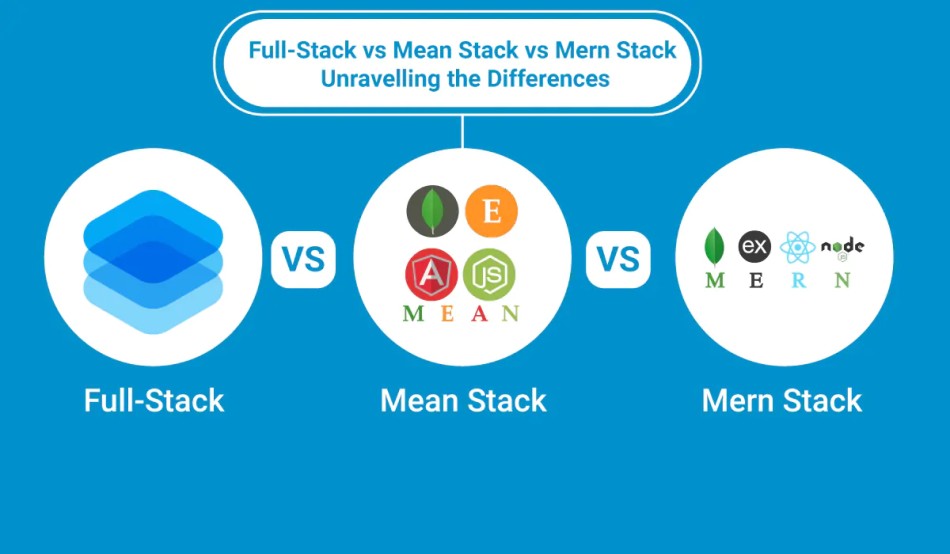The computerized scene is in consistent transition, and the advances that power it are developing dangerously fast. For organizations hoping to construct vigorous, versatile, and easy to use web applications, picking the right innovation stack is urgent. In 2024, three conspicuous competitors stick out: Full-Stack, MEAN, and MERN. Each stack offers exceptional benefits and takes care of explicit undertaking necessities. In this aide, we’ll dive into the complexities of each stack, assisting you with settling on an educated choice for your next advancement attempt.
Grasping the Full-stack, MEAN and MERN Stacks
Full-Stack Improvement: The expression “full-stack” alludes to an engineer’s capacity to deal with both the front-end (UI) and back-end (server-side rationale) of an application. Full-stack engineers have a flexible range of abilities, enveloping different programming dialects, structures, and data sets.
MEAN Stack: MEAN is an abbreviation for MongoDB, Express.js, Precise, and Node.js. It’s a JavaScript-based stack that smoothes out web improvement by utilizing a solitary language across the whole application.
MERN Stack: MERN is like MEAN, however it replaces Rakish with React.js. This stack likewise use JavaScript’s flexibility and offers a part based way to deal with front-end improvement.
Key Elements to Think about While Picking An Innovation Stack For An Impending Task
Project Prerequisites:
The intricacy, adaptability, and explicit highlights of your venture will impact your decision.
Execution:
Think about the exhibition ramifications of each stack for your application’s necessities.
Group Aptitude:
The abilities and experience of your improvement group ought to line up with the picked stack.
Expectation to absorb information:
Assess the expectation to learn and adapt related with each stack, particularly in the event that your group is new to specific advancements.
Local area Backing:
A lively local area guarantees admittance to assets, instructional exercises, and investigating help.
An Itemized Manual for Full-Stack, MEAN and MERN Stacks Improvement
Full-Stack improvement alludes to the capacity to deal with both the front-end (client-side) and back-end (server-side) of web advancement. A Full-Stack designer is capable in a large number of innovations and can deal with the total web improvement cycle. From dealing with the UI to composing server scripts and overseeing information bases, Full-Stack engineers are adaptable experts equipped for building vigorous and versatile applications.
Key Advancements in Full-Stack Improvement:
Front-End:
HTML, CSS, JavaScript, Respond, Precise, Vue.js
Back-End:
Node.js, Python, PHP, Java, .NET, Ruby and systems of the equivalent
Information bases:
MySQL, PostgreSQL, MongoDB, SQL Server
Benefits of Full-Stack Improvement:
Adaptability: Full-Stack engineers can deal with numerous pieces of the improvement interaction, causing them ideal for projects that to require adaptability.
Savvy: By recruiting committed Full-Stack engineers, you can decrease the need to enlist separate front-end and back-end trained professionals.
Quicker Improvement: With a Full-Stack engineer, there’s no requirement for regular correspondence between front-end and back-end groups, which can accelerate the improvement cycle.
The MEAN stack comprises of four key advances: MongoDB, Express.js, Precise, and Node.js. This blend is broadly utilized for cross-stage improvement, offering a total answer for building dynamic web applications. Each layer of the MEAN stack is JavaScript-based, making it a #1 among designers hoping to rearrange and accelerate the improvement cycle.
Key Parts of the MEAN Stack:
MongoDB:
A NoSQL data set that handles information capacity in an adaptable and versatile manner.
Express.js:
A web application system for Node.js, working on server-side turn of events.
Precise:
A strong front-end structure for building dynamic UIs.
Node.js:
A runtime climate for executing JavaScript on the server side.
Benefits of the MEAN Stack:
Single Language Improvement: Since JavaScript is utilized for both client and server-side turn of events, it works on the coding system.
Adaptability:
The MEAN stack is exceptionally versatile, making it ideal for enormous scope venture applications.
Elite Execution:
With non-obstructing engineering, Node.js offers further developed execution and effectiveness.
Like the MEAN stack, the MERN stack additionally involves JavaScript for both front-end and back-end improvement. In any case, it replaces Rakish with Respond, a famous library for building dynamic UIs. The MERN stack is great for building current, elite execution applications that require complex front-end communications.
Key Parts of the MERN Stack:
MongoDB:
A NoSQL information base that considers adaptable information structures.
Express.js:
A back-end system that makes server-side improvement simpler.
Respond:
A strong library for building intelligent UIs.
Node.js:
The JavaScript runtime climate that controls the server side.
Benefits of the MERN Stack:
Part Based Design: Respond’s part based structure permits engineers to make reusable UI parts, making it more straightforward to fabricate and keep up with huge applications.
Website optimization Well disposed: Respond renders parts on the server-side, making it more straightforward for web search tools to record the application.
Elite Execution: By utilizing Respond’s virtual DOM, the MERN stack furnishes better execution in applications with weighty front-end connections.
Full-Stack versus MEAN versus MERN: Key Contrasts
While contrasting Full-Stack versus MEAN Stack versus MERN Stack, there are a few variables to consider, including the venture’s intricacy, versatility, and client experience prerequisites.
-
Front-End Adaptability
Full-Stack designers can look over an assortment of front-end innovations (Rakish, Respond, Vue.js, and so on), contingent upon the venture’s necessities.
MEAN Stack depends on Precise for front-end improvement, which is appropriate for building profoundly organized, undertaking grade applications.
MERN Stack utilizes Respond, which is leaned toward for its adaptability, speed, and the capacity to deal with complex UI associations.
-
Project Adaptability
Full-Stack improvement offers adaptability with innovation decisions, making it reasonable for a great many undertakings, from new companies to huge ventures.
MEAN Stack gives hearty versatility, causing it ideal for big business applications that to require consistent execution across different stages.
MERN Stack is exceptionally versatile and is particularly appropriate for applications requiring dynamic front-end connections and a smooth client experience.
-
Advancement Speed
Full-Stack designers can chip away at both the front-end and back-end all the while, accelerating the improvement interaction.
MEAN Stack designers can profit from the single-language (JavaScript) climate, bringing about quicker advancement cycles.
MERN Stack engineers influence Respond’s reusable parts, considering faster turn of events, especially in projects that require intelligent UI components.
-
Extra Contemplations
Arising Advancements: Assuming your task includes state of the art innovations like simulated intelligence/ML or IoT, guarantee the picked stack upholds consistent incorporation.
Long haul Upkeep: Think about the drawn out practicality of your application and pick a stack that lines up with your future objectives.
Versatility: Assuming you expect critical development, select a stack that can deal with expanded traffic and information volumes.



